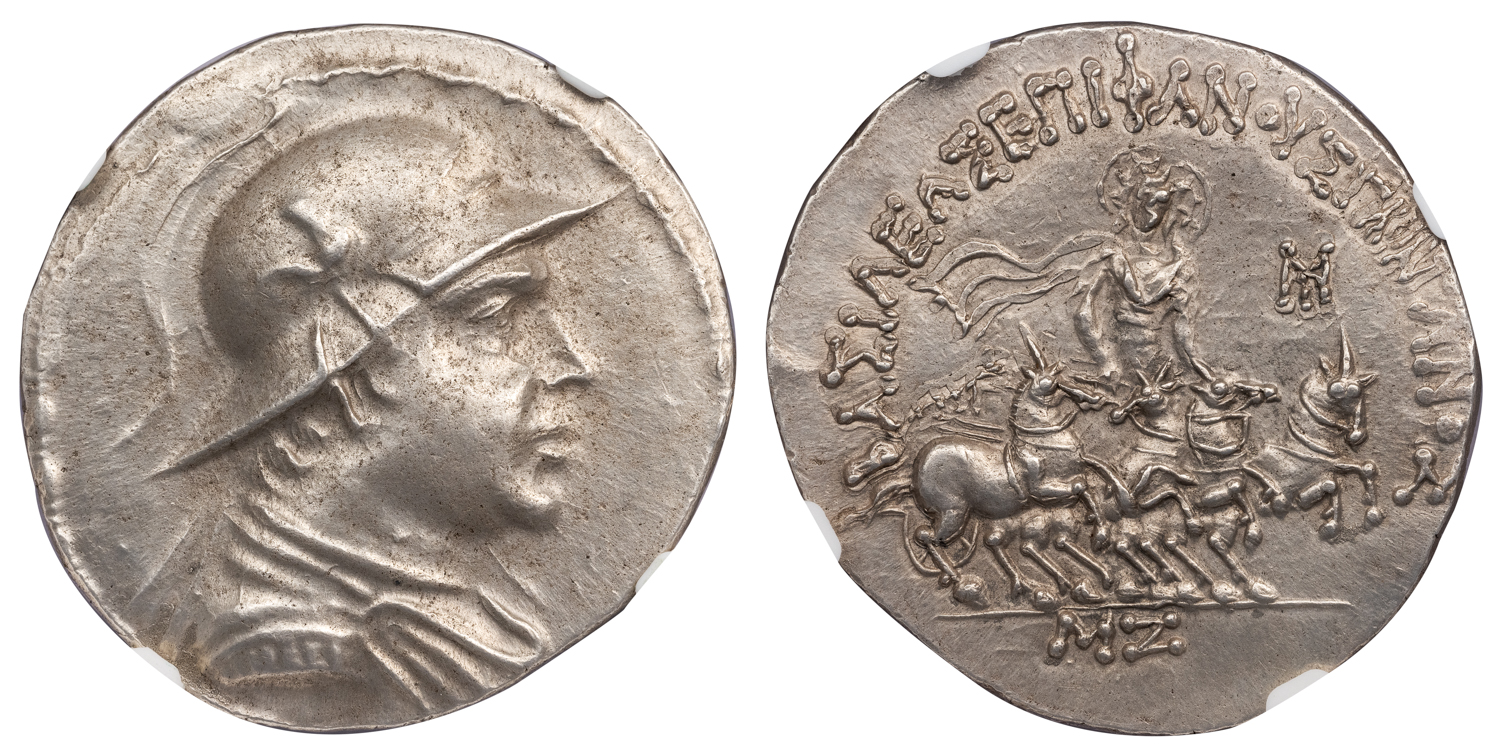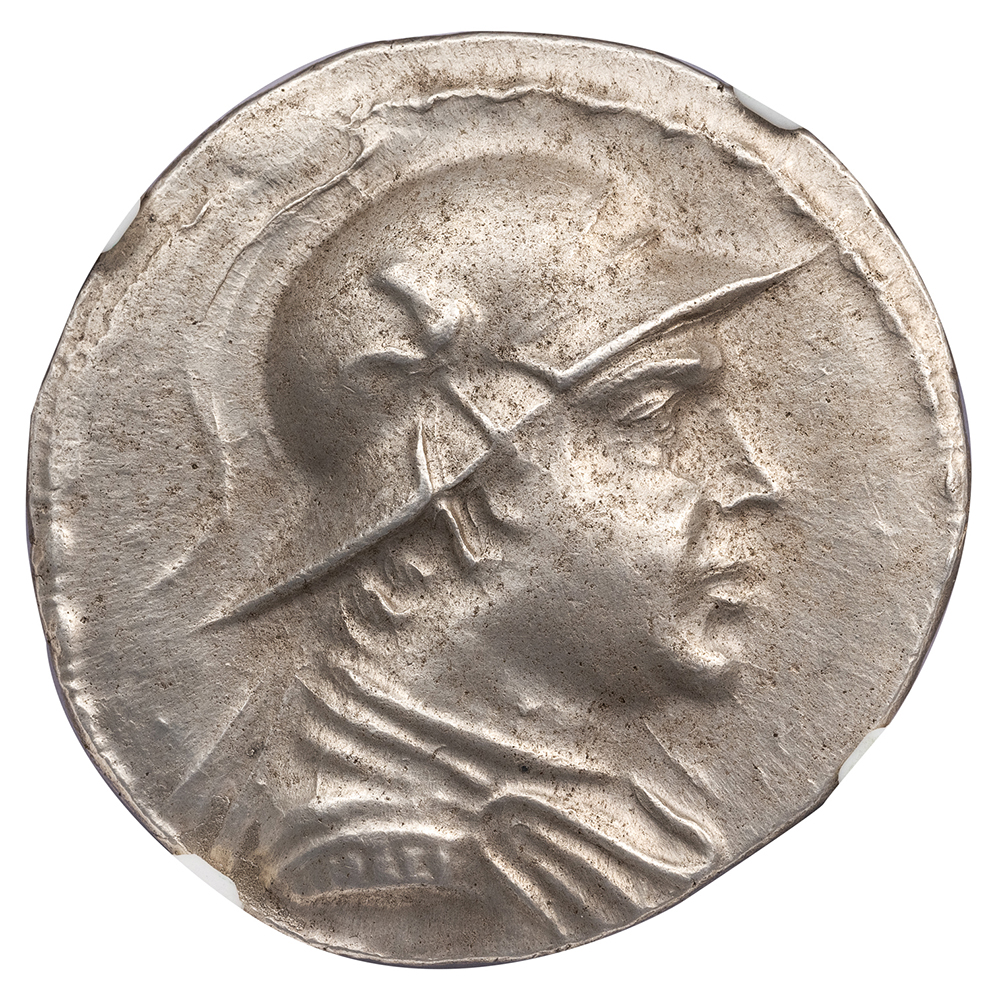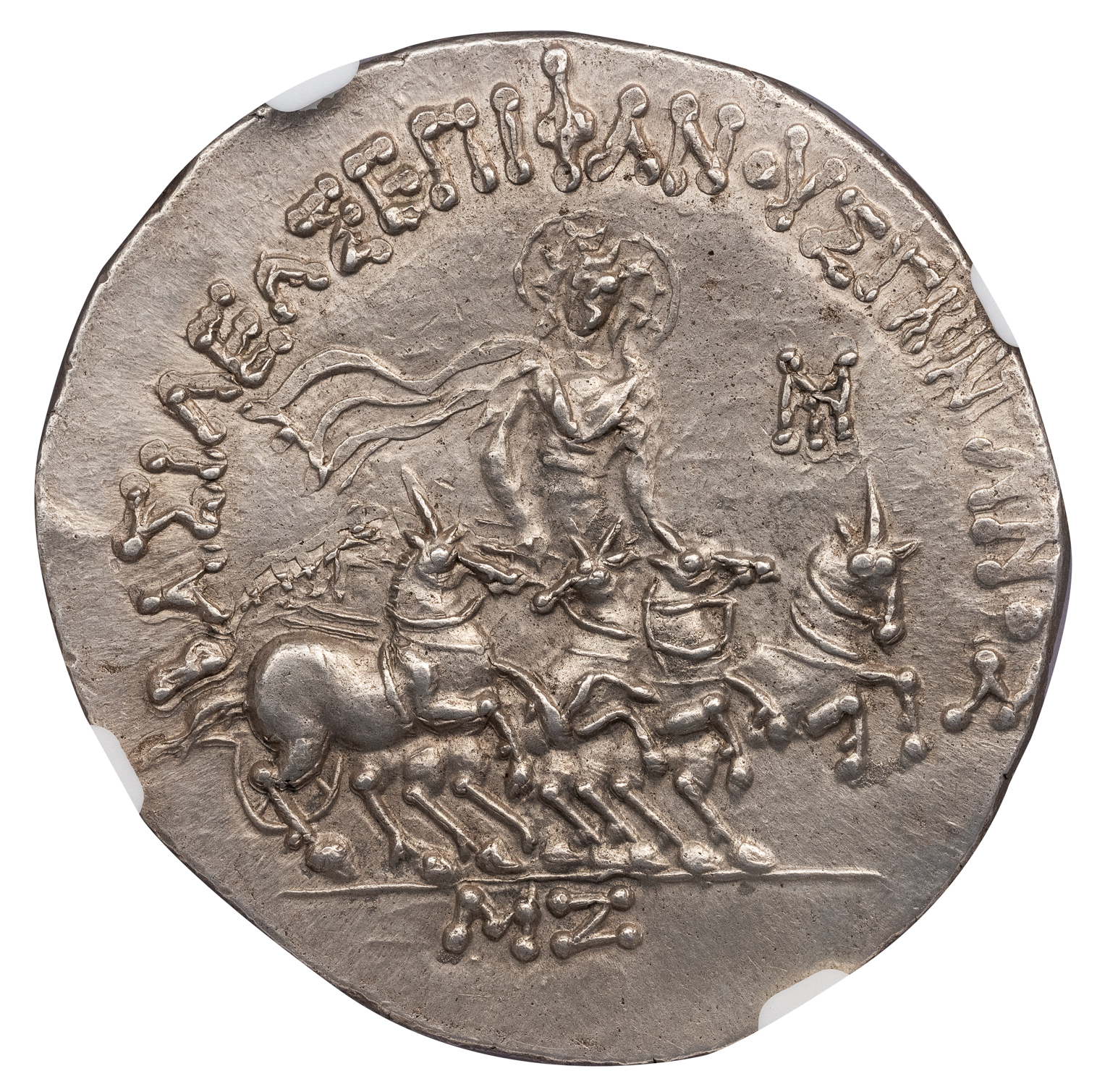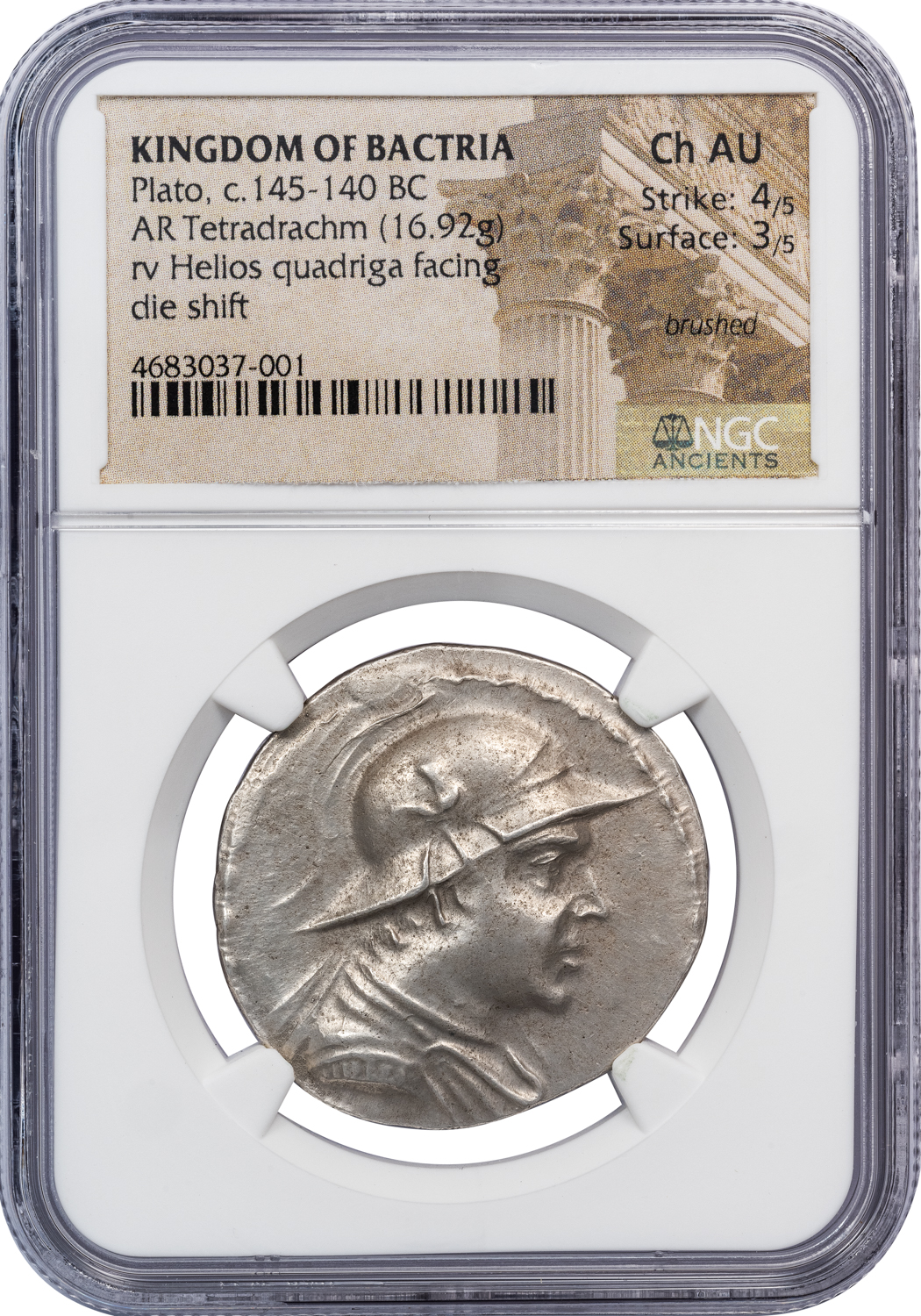PLATO SILVER TETRADRACHM – SECOND BEST GRADED ISSUE WITH HELIOS IN QUADRIGA – CHOICE AU NGC GRADED GREEK BACTRIA COIN (Inv. 19766)
$24,000.00
19766. KINGDOM OF BACTRIA. PLATO, ca. 145–140 BC.
Silver Tetradrachm, 16.92 g, 33 mm.
Obv. Diademed, draped and cuirassed bust of Plato right, wearing helmet with bull’s horn and ear. Rev. EΠIΦANOYE ΠΛATΩNOΣ, Helios, facing, standing in quadriga with galloping horses to right, MY control monogram in right field, MZ (date) in exergue.
Bopearachchi 3A; SNG ANS 631; HGC 12, 167.
Ex Dmitry Markov Coins & Medals with M&M Numismatics Ltd, Auction 60, 1/9/2024, lot 164 = New York Sale 57, 1/10/2023, lot 129.
NGC graded CHOICE AU, Strike 4/5, Surface 3/5, “brushed, die shift.” Among the 3 highest graded specimens currently in the NGC census, one higher at the Mint State level, the other same grade of CHOICE AU but with a significant planchet flaw on the helmet and brow.
Like many of his predecessors in Bactria and India, Plato Epiphanes (“the God–Manifest”) was an obscure Graeco–Bactrian king who is known only from his coinage. It has been proposed that he was a brother of Eucratides I (c. 170–145 BC), a powerful ruler who extended the borders of the Bactrian kingdom in northern India, reaching as far as the city of Broach in Gujarat. Unfortunately, Eucratides was murdered, apparently by his own son, Heliocles I. His death heralded the fragmentation of the Bactrian kingdom and allowed for increased incursions by the nomadic Yuezhi. Plato is believed to have reigned in the period c. 145–140 BC since none of his coins have been found at Aï Khanoum, a northern Bactrian city overrun by the Yuezhi around 145 BC. There is no way to know now whether the Bactrian Plato had any philosophical bent of his own to match that of his Athenian namesake, or precisely what message he meant to convey with his impressive Helios types. However, considering the name of Eucratides’ son, Helios may have been a divine patron of the dynasty recognizable to both the Greek and indigenous Iranian populations of Bactria. Helios was commonly syncretized with the Iranian deity Mithra, who continued to appear on coins after the fall of the Bactrian and Indo–Greek kingdoms and the foundation of the Kushan Empire.




